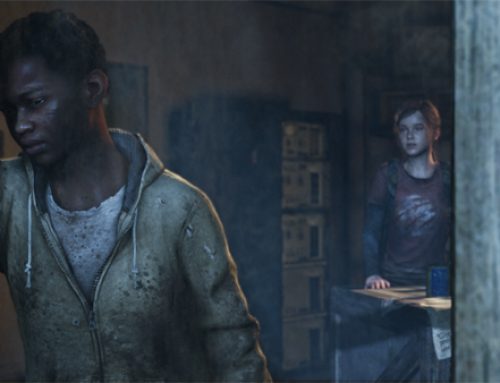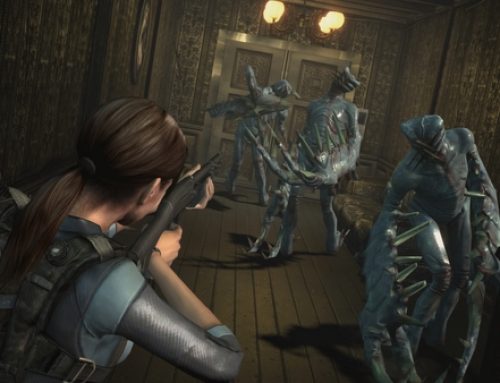I spent a couple of hours Tuesday playing Square Enix’s upcoming “Final Fantasy XIII,” then interviewing the game’s producer, Yoshinori Kitase; director, Motomu Toriyama; and battle system director, Yuji Abe. In the spirit of giving credit where it’s due, my interview session was shared with Bay Area News Group’s Gieson Cacho, so the interview questions asked weren’t all my own.
Before I delve into talking about the game, I need to get a giant caveat out of the way: I am not a big “Final Fantasy” guy. It’s not that I don’t like the games. Some of my fondest childhood gaming memories involve pouring hours into the trio of “Final Fantasy” games released on the Nintendo Entertainment System and Super Nintendo. When I bought my first PC in 1998, I made sure it could run “Final Fantasy VII.”
It did run “Final Fantasy VII,” but poorly, leaving me stuck about halfway through a title that a lot of older gamers remember as the first game that made them cry. For pretty much the entirety of the PlayStation and PlayStation 2’s life cycles, I didn’t own a Sony game console, which meant I missed out on the eighth through 12th installments in the series. (I own all the core “Final Fantasy” games now, but I have no idea when I’ll get a chance to go back and play them.)
In other words, I’m largely a “Final Fantasy” noob at this point. While I’m familiar with the Active Time Battle system’s rechargeable meter from “Final Fantasy IV,” my first few minutes with “Final Fantasy XIII” had me feeling like an ancient old man plopping myself down at the wheel of a Prius, after not having driven a car since that Model T I had in my early 20s.
My hour or so spent with the game consisted entirely of learning the game’s somewhat complex battle system. For the sake of the demo, the Square Enix reps gave us journalists access to one of the game’s latest stages, so we could see and sample the broad array of powers and tactics available as the game unfolds. Consequently, I steered clear of any areas that might advance the story and focused on running around and killing stuff.
Like most Japanese-style role-playing games, “Final Fantasy XIII” has you taking a group of characters, in this case three, and managing strategic fights against groups of enemies. As you play through the game, each of your characters will learn “jobs,” which govern the skills available to them. The Ravager, for instance, specializes in offensive magic, while the Medic heals injured companions. Each character has several such jobs available to them, allowing you to customize your companions and jobs to your play style.
None of this is particularly new. What is new for “Final Fantasy XIII” is its “paradigm” system. As I said earlier, the main character, Lightning, and her five squad members are capable of learning numerous jobs. What the paradigm system does is let you create combinations of different jobs. For example, you might have Lightning play as an offensive-minded Commando, while the two supporting characters serve as a Ravager and Medic. That combination is an example of a single paradigm. But what if an enemy is totally kicking your butt? In that case, you might want one Commando and two medics, which would be yet another paradigm.
The trick to master in “Final Fantasy XIII” is that the game allows you to switch among various paradigms you create in the game’s menu. So you might want to start off with two attackers and a character that decreases the effectiveness of the enemy’s attack, then switch to a more medic-focused squad as your enemy whittles your life away, then switch to three attackers as your enemy’s life nears 0.
Yet battles come down to more than just managing paradigms. Each job has multiple attack types and options available to it. While the computer controls the actions of Lightning’s two squadmates (quite effectively, I might add), you’re responsible for deciding what commands to give Lightning. Fortunately, the developers remembered us noobs. One option is to just choose an automatic attack, letting the computer choose your attack types for you. (You still pick a target to attack.) I found the auto attack immensely helpful while I was getting the hang of the different paradigms. Not only did it allow me to keep up in battle as I swapped paradigms on the fly, I got to watch each of the individual attacks the computer carried out to learn what they did.
It’s simple to describe, but tough to master. Every second you sit there looking at the menus, trying to decide what to do, the enemy spends attacking you and plotting its next move. Whereas combat in the “Final Fantasy” games of old more resembled turn-based strategy games, doing battle here is more akin to a real-time strategy title like “Warcraft III” or “Age of Empires.” Sit on your hands at your own peril.
In fact, Yoshinori Kitase, the game’s producer said through a translator that games like “Age of Empires” were hugely influential, as the team wanted “Final Fantasy XIII’s” battles to have the flexibility of a good real-time strategy title. If you want, you can micromanage every aspect of your battles, crafting nuanced, complex strategies, or you can, in Kitase’s words, “step back as director … and control the battle’s tide.” The whole system was designed to be “speedy and tactical, while keeping the strategic element,” Yuji Abe, the battle director said.
Interestingly, Kitase and Motomu Toriyama, the game’s director, talked more about being influenced by first-person shooters than other games, saying they hoped to give the series that genre’s feeling of placing the player within the combat that’s occurring, rather than just having the player feel like a passive viewer. This is achieved not through first-person cameras but by placing the game’s camera at various points within the battle as it unfolds.
But let’s get back to my failures as a gamer. After watching Square Enix representative Klee Kuo battle a fearsome enemy called a Behemoth King, I picked up a DualShock 3 to have a go and was dead within minutes. (The s here might be charitable.) Kuo patiently suggested that I not rush right in to try to conquer one of the game’s hardest enemies, but instead give him a wide berth and cut my teeth on some less challenging foes.
After an hour of messing around with the battle system, I felt like I got the hang of it. I tried playing on both the PS3 and the Xbox 360 (both builds looked great), and by the end of the afternoon I was able to get four- or five-star ratings (out of five) on most of the battles against lesser foes. The tougher enemies, such as Behemoth King and a giant, dinosaur thing called an Ademanchelid (the spelling may be off, as my pen was failing and my handwriting is sloppy), still kicked my butt. But I’m told the early stages of the game ease you into the battle system gradually. I’m fairly confident that, once the retail game hits, I’ll be able to hold my own.
But we didn’t just talk about the battle system in the interview. One of the topics we returned to a few times was the idea that “Final Fantasy XIII” is the franchise’s first title in the high-definition era. While the PS3 and Xbox 360’s improved horsepower and graphics help create a prettier game in general, Abe talked about how the strength of the consoles allowed him to focus on speedy fast-paced battles.
Toriyama emphasized the high-definition visuals, not for their ability to render the game’s monsters in stunning clarity, but for the developers’ newfound ability to render a greater range of facial expressions and the “subtle movements in the eyes and cheeks and every part of the face that makes (the characters) real on screen.”
In part because of the leap forward in technology from the PS2 to the PS3 and 360, “Final Fantasy XIII” has had an extremely long development cycle. First announced in 2005, the game only reached Japanese retailers in December. Its U.S. release is March 9.
While localizing the game for many different regions, plus creating both PS3 and Xbox 360 versions, helped lead to longer development times, Kitase feels like his team gained valuable knowledge from working on the title. When work on “FFXIII” first began, he said, it took a team of artists about four months to create a single monster, but toward the end of the cycle, the same team could do an equivalent amount of work in about a month.
We also talked about what some gamers have called the game’s linearity. A lot of folks who’ve played the Japanese version of the game have emphasized that “Final Fantasy XIII” has a lot less exploration, at least early on, than fans of the series are used to. Naturally, this has been met with a fair amount of hand-wringing on gaming Web sites and message boards. I was curious to see what went into the decision to make the game more straightforward. “Uncharted 2: Among Thieves” was one of the most linear, controlled games I’ve ever played, but it was clearly designed that way to give developer Naughty Dog control over the game’s pacing.
Toriyama indicated that the “FFXIII” team had the same goal in mind. “It’s a better-suited style for creating a more movie- or drama-like experience,” he said. He also pointed out that the game’s “story is very complex and the battle system is new.” This led the developers to create a fairly linear early game, which would allow gamers to get the hang of the battle system and world, before opening things up a bit in the second half.



